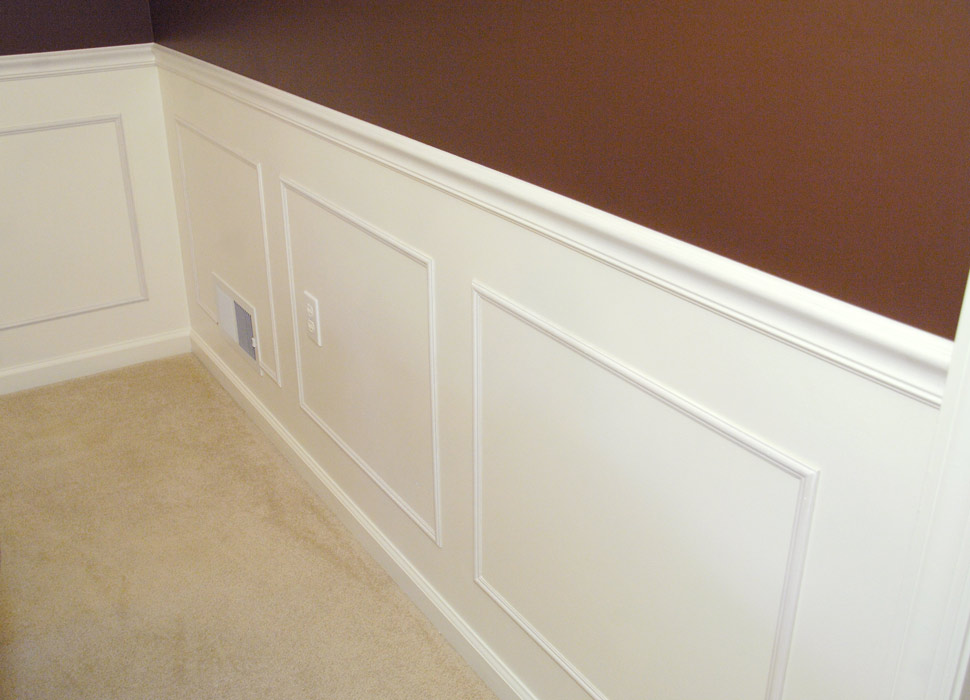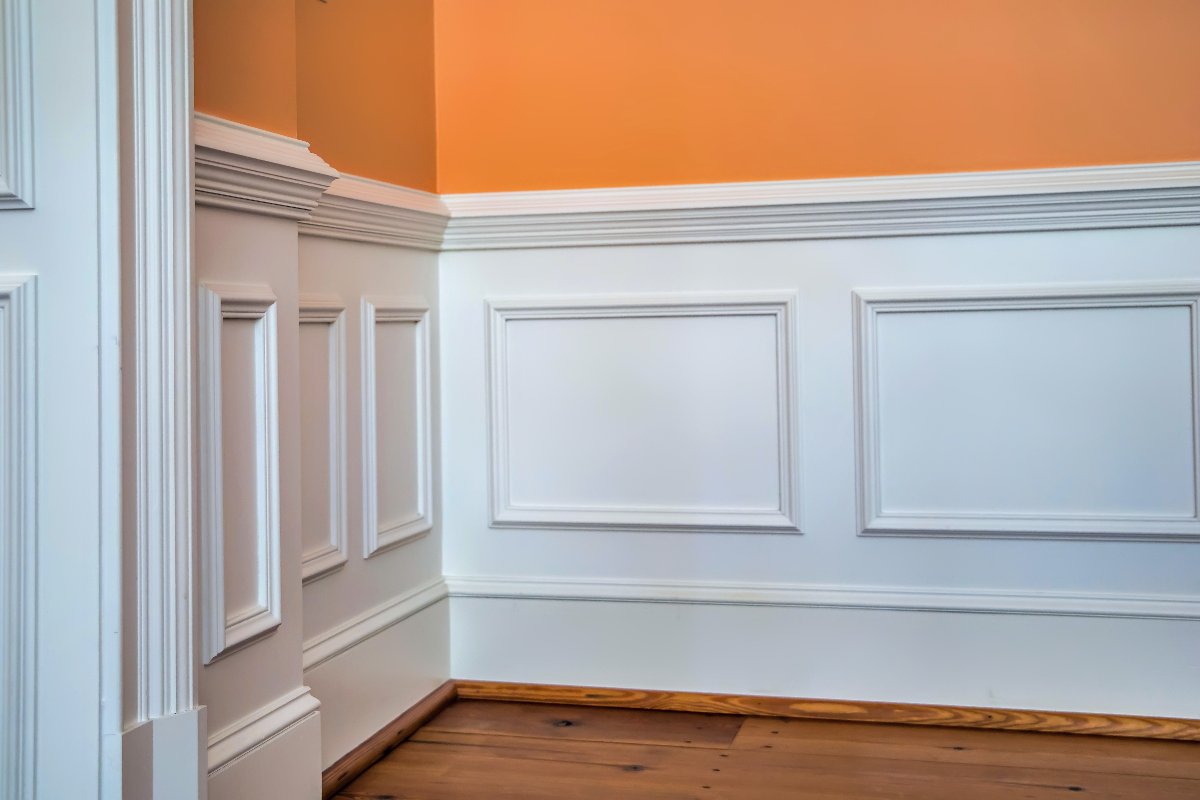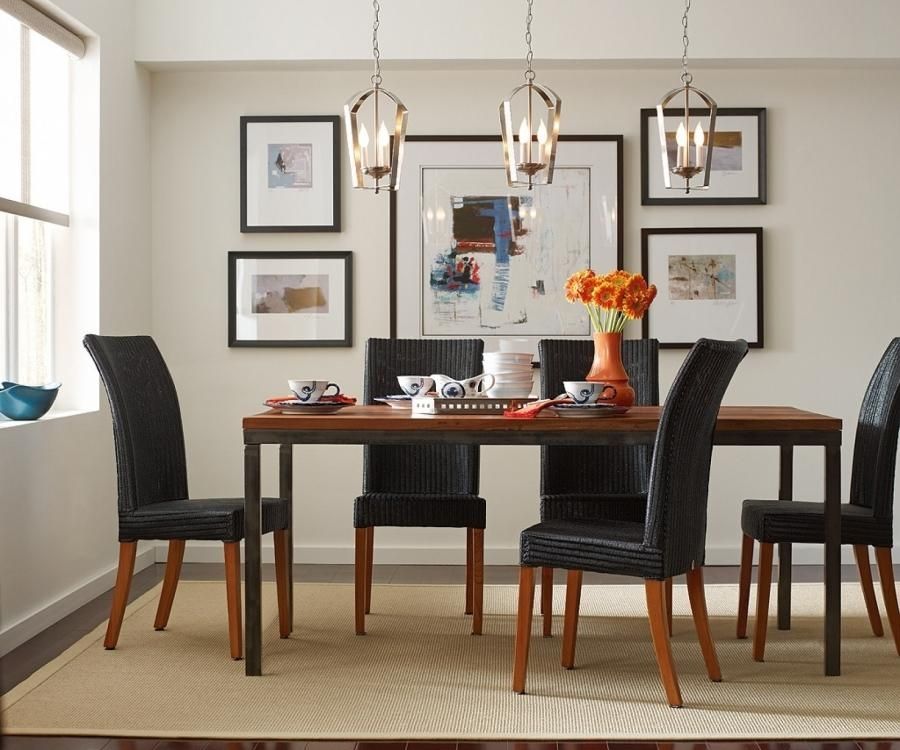Adding half wall molding to your dining room is a great way to elevate the design and add a touch of elegance. Here are some ideas to inspire your next home improvement project: Crown Molding Half Wall: Install crown molding at the top of your half wall for a more traditional and formal look. This type of molding adds height and visual interest to the room. Wainscoting Half Wall: Wainscoting is a classic choice for half wall molding. It can be made of wood, tile, or even wallpaper for a more budget-friendly option. Wainscoting adds texture and depth to the space. Picture Frame Half Wall: This type of molding is perfect for those who want a more modern and minimalist look. Use rectangular frames to create a sleek and clean design on your half wall. Geometric Half Wall: Play with shapes and angles by installing geometric molding on your half wall. This adds a unique and eye-catching element to your dining room. Contrasting Colors Half Wall: Instead of sticking to traditional white, consider using a different color for your half wall molding. This adds a pop of color and can tie in with other elements in the room, such as curtains or furniture.Dining Room Half Wall Molding Ideas
Installing half wall molding may seem daunting, but with the right tools and techniques, it can be a fun and rewarding DIY project. Here are the steps to follow: Step 1: Measure and Plan: Measure the length and height of your half wall to determine how much molding you will need. Plan out the design and placement of the molding beforehand to ensure a cohesive look. Step 2: Gather Materials: You will need half wall molding, a saw, a level, a measuring tape, a nail gun, and wood glue. Make sure to choose high-quality materials for a professional finish. Step 3: Cut the Molding: Use a saw to cut the molding to the correct length and angle to fit your half wall. Remember to measure twice and cut once to avoid any mistakes. Step 4: Install the Molding: Use wood glue to attach the molding to the wall and secure it with a nail gun. Make sure it is level and flush against the wall for a seamless look. Step 5: Fill and Sand: Fill in any gaps or nail holes with wood filler and sand down the surface for a smooth finish. Step 6: Paint or Stain: Once the molding is installed and dry, you can paint or stain it to match the rest of the room's decor.How to Install Half Wall Molding in a Dining Room
Half wall molding doesn't have to be limited to just the traditional top or bottom placement. Here are some creative ways to use it in your dining room: Border: Use half wall molding to create a border around the entire room. This adds a cohesive and elegant touch to the space. Accent Wall: Instead of using molding on a half wall, use it on a full wall to create an accent wall. This works especially well behind a buffet or server in the dining room. Dividers: Use half wall molding to create dividers between different areas in the dining room, such as a sitting area or bar. This adds structure and visual interest to the space. Backsplash: Install half wall molding as a backsplash in your dining room. This adds texture and can protect your walls from spills and splatters. Shelf: Create a shelf on top of your half wall using molding. This is a great way to display decorative items or add extra storage space in your dining room.Creative Ways to Use Half Wall Molding in a Dining Room
When it comes to half wall molding designs, the possibilities are endless. Here are some popular options to consider: Classic: Stick to traditional designs, such as crown molding or wainscoting, for a timeless and elegant look. Modern: Use geometric or abstract designs for a more modern and unique touch. Rustic: For a cozy and rustic feel, opt for distressed or weathered wood molding. Minimalist: Keep it simple with clean lines and minimal detailing for a minimalist and contemporary design.Half Wall Molding Designs for a Dining Room
As mentioned earlier, installing half wall molding is a great DIY project. Not only will it save you money, but it also gives you full control over the design and placement. Here are some tips and tricks for a successful DIY project: Research: Take the time to research different designs and techniques to find the one that best fits your skills and preferences. Practice: Before installing the molding on your actual half wall, practice on a spare piece of wood to get comfortable with the tools and techniques. Take Your Time: Don't rush the process. Take your time to ensure precision and accuracy for a professional-looking finish. Ask for Help: Don't be afraid to ask for help from a friend or family member, especially when it comes to measuring and cutting the molding.DIY Half Wall Molding for a Dining Room
The color of your half wall molding can greatly impact the overall look and feel of your dining room. Here are some color ideas to consider: Classic White: White is a timeless and versatile color that works well with any design style. It also helps to make the room feel brighter and more spacious. Natural Wood: If you want to showcase the natural beauty of wood, opt for a stain or clear coat to enhance the grain and texture. Contrasting Colors: Use a contrasting color for your half wall molding to make it a focal point in the room. For example, a dark blue molding against a light grey wall. Bold Colors: Don't be afraid to go bold and add a pop of color with your half wall molding. This is a great way to add personality and style to your dining room.Half Wall Molding Color Ideas for a Dining Room
Both half wall and full wall molding have their own unique benefits. Here are some factors to consider when deciding which one is right for your dining room: Cost: Half wall molding is typically more budget-friendly as it requires less material and labor. Impact: Full wall molding can make a bigger impact as it covers a larger surface area, while half wall molding is more subtle and adds texture and depth. Function: Full wall molding may be more functional as it can protect walls from furniture or create a backsplash, while half wall molding is primarily decorative.Half Wall Molding vs Full Wall Molding in a Dining Room
The height of your half wall molding will depend on personal preference and the design of your dining room. Here are some guidelines to help you determine the right height: Standard: The standard height for half wall molding is around 32-36 inches from the floor. This allows for a chair rail to be placed on top for added visual interest. Proportion: Consider the proportion of your wall and room. For instance, if you have high ceilings, you may want to install taller half wall molding to balance out the space. Function: If you plan on using your half wall as a shelf or backsplash, make sure the height is suitable for its intended purpose.Half Wall Molding Height for a Dining Room
There are various materials to choose from when it comes to half wall molding. Here are some popular options: Wood: Wood is a classic and versatile choice for half wall molding. It can be stained or painted to match any design style. MDF: Medium-density fiberboard (MDF) is a budget-friendly option that can be easily painted and comes in a variety of designs. Tile: For a more unique and durable option, consider using tile for your half wall molding. This works well in kitchens and dining rooms with high traffic. Wallpaper: Wallpaper is a great option for those on a budget or looking for a temporary way to add half wall molding to their dining room.Half Wall Molding Materials for a Dining Room
Lastly, here are some popular half wall molding styles to inspire your next home improvement project: Traditional: Stick to traditional designs, such as crown molding or picture frame molding, for a timeless and elegant look. Contemporary: Use clean lines and minimal detailing for a contemporary and modern design. Victorian: Embrace ornate and intricate designs for a Victorian-inspired look. Farmhouse: For a cozy and rustic feel, opt for distressed or weathered wood molding in a farmhouse style dining room.Half Wall Molding Styles for a Dining Room
Maximizing Space and Style with Dining Room Half Wall Molding

The Importance of a Well-Designed Dining Room
 The dining room is often seen as the heart of the home, a place where families and friends gather to enjoy meals and create lasting memories. As such, it is essential to have a well-designed dining room that not only reflects your personal style but also maximizes the space available. One way to achieve this is through the use of half wall molding, a design element that adds both visual interest and functionality to your dining room.
The dining room is often seen as the heart of the home, a place where families and friends gather to enjoy meals and create lasting memories. As such, it is essential to have a well-designed dining room that not only reflects your personal style but also maximizes the space available. One way to achieve this is through the use of half wall molding, a design element that adds both visual interest and functionality to your dining room.
The Benefits of Half Wall Molding
 Half wall molding, also known as wainscoting, is a type of decorative paneling that is typically applied to the lower half of a wall. This design element has been used for centuries and was originally used to protect walls from damage. However, in modern times, half wall molding has become a popular choice for homeowners looking to add character and charm to their dining rooms.
One of the main benefits of half wall molding is its ability to visually divide a room. This is especially useful in open-concept homes where the dining room may be connected to the living room or kitchen. By adding half wall molding, you can create a distinct separation between the dining area and the rest of the space, giving it a more intimate and cozy feel.
Another advantage of half wall molding is its ability to add texture and dimension to a room.
With a variety of styles and designs available, you can choose a type of molding that complements your overall decor. For a more traditional look, you can opt for raised panel molding, while a more modern and sleek design can be achieved with flat panel molding. The added depth and detail of half wall molding can also help make a room feel more luxurious and upscale.
Half wall molding, also known as wainscoting, is a type of decorative paneling that is typically applied to the lower half of a wall. This design element has been used for centuries and was originally used to protect walls from damage. However, in modern times, half wall molding has become a popular choice for homeowners looking to add character and charm to their dining rooms.
One of the main benefits of half wall molding is its ability to visually divide a room. This is especially useful in open-concept homes where the dining room may be connected to the living room or kitchen. By adding half wall molding, you can create a distinct separation between the dining area and the rest of the space, giving it a more intimate and cozy feel.
Another advantage of half wall molding is its ability to add texture and dimension to a room.
With a variety of styles and designs available, you can choose a type of molding that complements your overall decor. For a more traditional look, you can opt for raised panel molding, while a more modern and sleek design can be achieved with flat panel molding. The added depth and detail of half wall molding can also help make a room feel more luxurious and upscale.
Using Half Wall Molding in Your Dining Room
 When it comes to incorporating half wall molding into your dining room design, the possibilities are endless. You can choose to install it on all four walls, or just on one wall to create a focal point. You can also experiment with different heights and widths of molding to achieve your desired look.
Additionally, half wall molding can serve a functional purpose in your dining room.
It can act as a protective barrier for your walls, preventing damage from chairs or other furniture. It can also serve as a convenient spot to hang artwork or mirrors, adding even more visual interest to the space.
In conclusion, dining room half wall molding is a versatile and attractive design element that can enhance any dining room. Whether you are looking to add texture, create separation, or simply add a touch of elegance to your space, half wall molding is an excellent option to consider. With its timeless appeal and practical benefits, it is clear why this design trend continues to be a popular choice among homeowners. So why not elevate your dining room design with the addition of half wall molding today?
When it comes to incorporating half wall molding into your dining room design, the possibilities are endless. You can choose to install it on all four walls, or just on one wall to create a focal point. You can also experiment with different heights and widths of molding to achieve your desired look.
Additionally, half wall molding can serve a functional purpose in your dining room.
It can act as a protective barrier for your walls, preventing damage from chairs or other furniture. It can also serve as a convenient spot to hang artwork or mirrors, adding even more visual interest to the space.
In conclusion, dining room half wall molding is a versatile and attractive design element that can enhance any dining room. Whether you are looking to add texture, create separation, or simply add a touch of elegance to your space, half wall molding is an excellent option to consider. With its timeless appeal and practical benefits, it is clear why this design trend continues to be a popular choice among homeowners. So why not elevate your dining room design with the addition of half wall molding today?
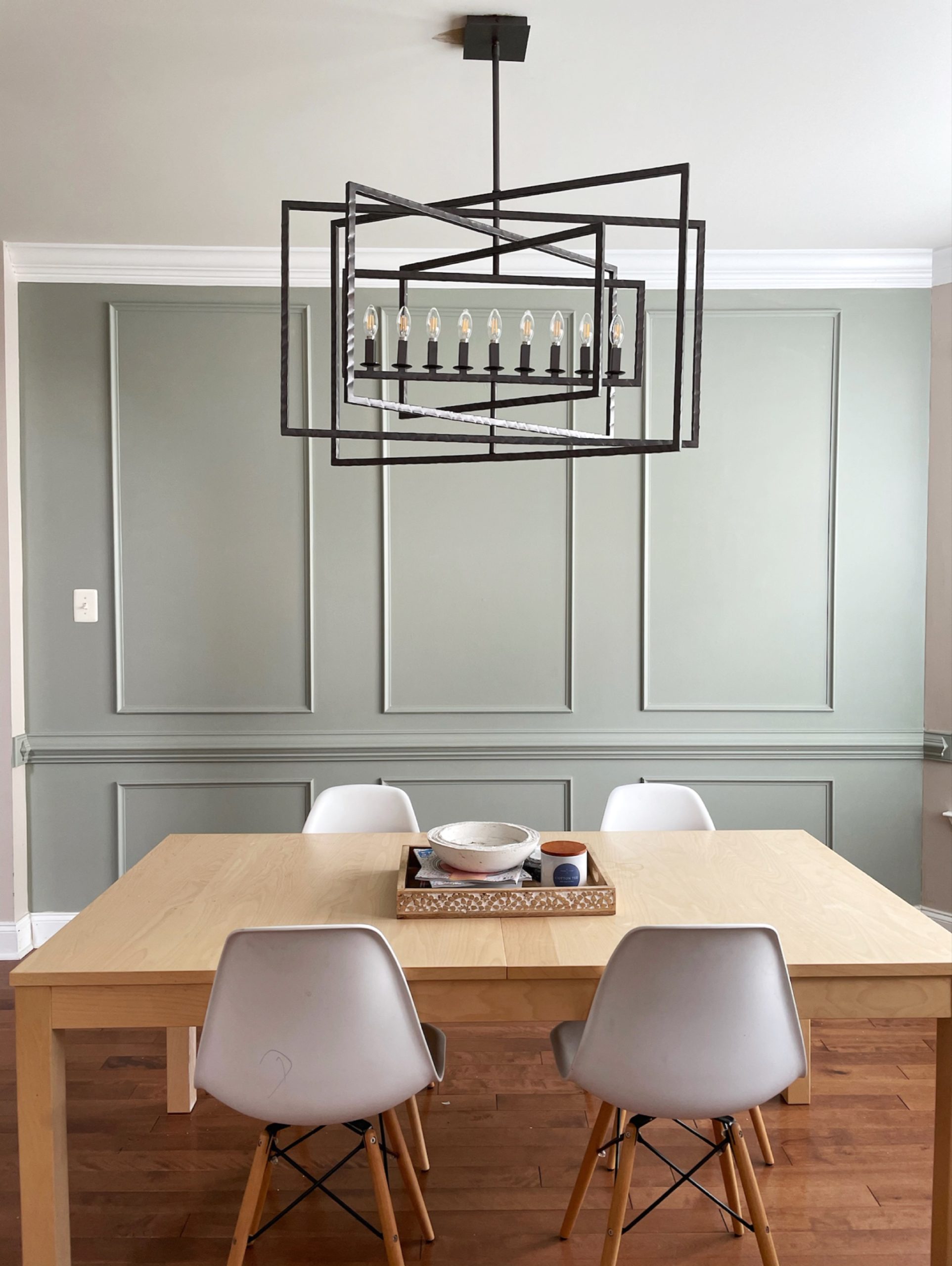







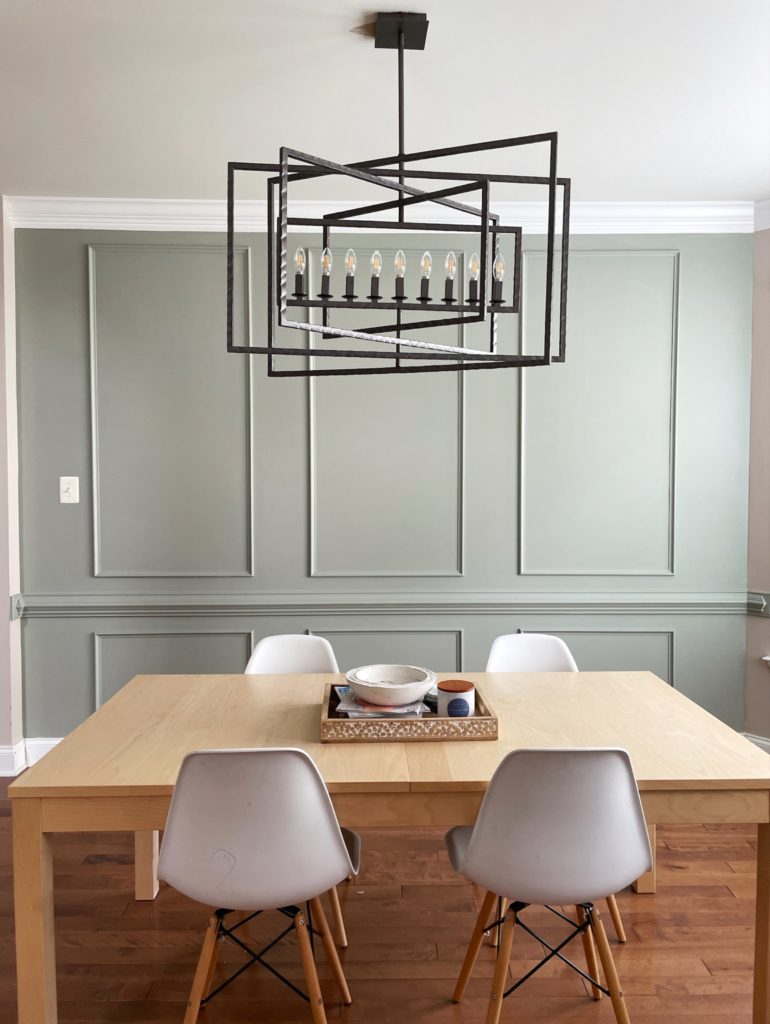










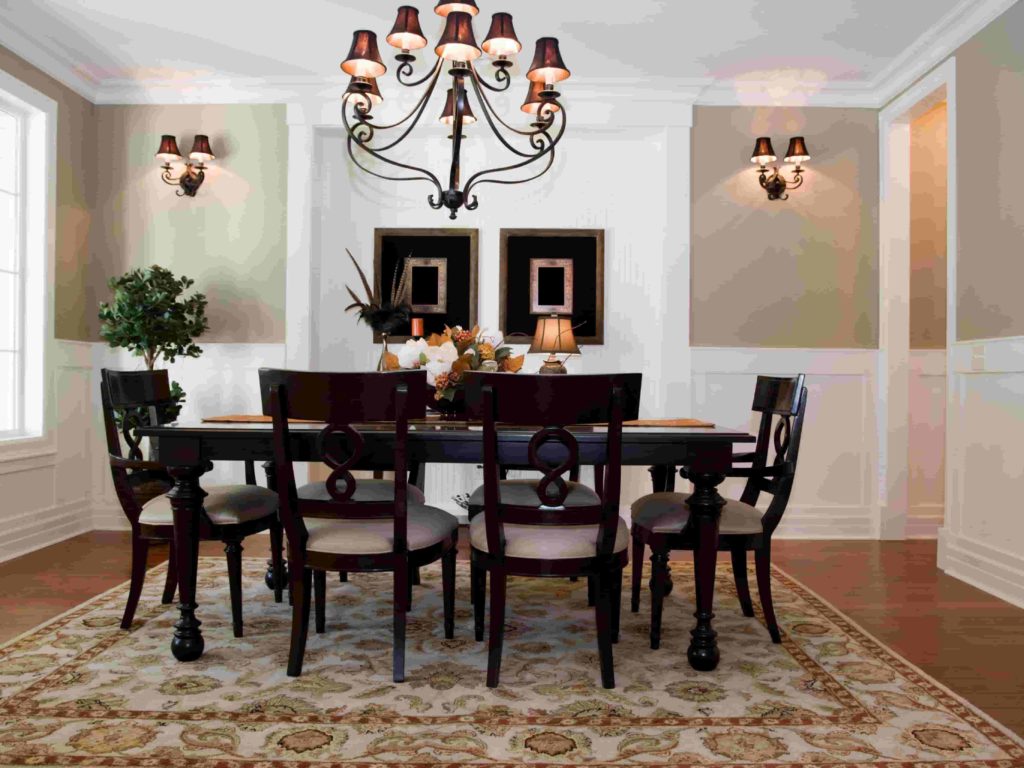

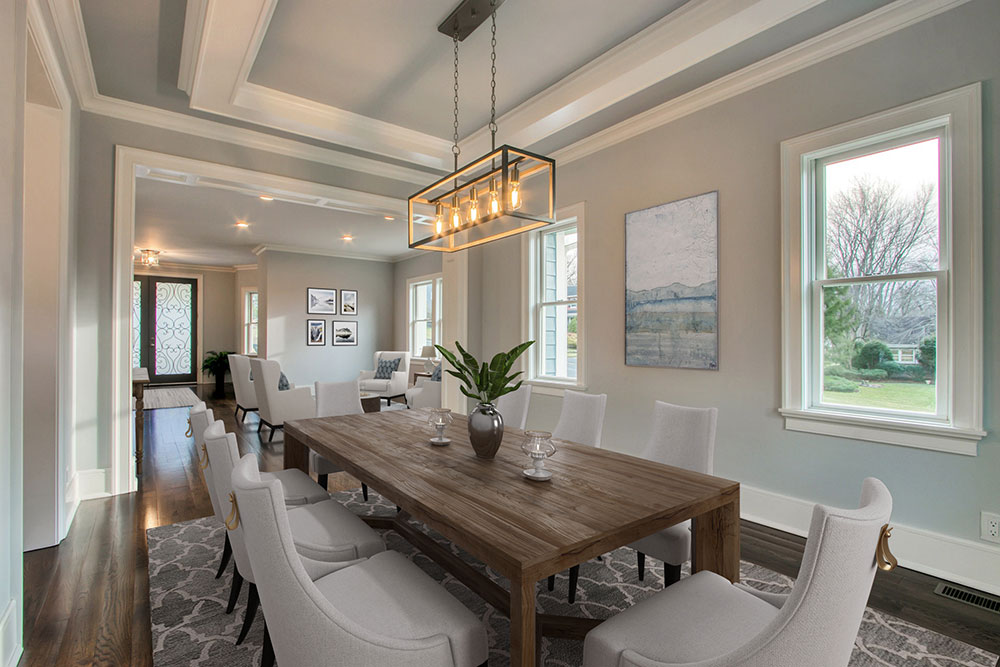







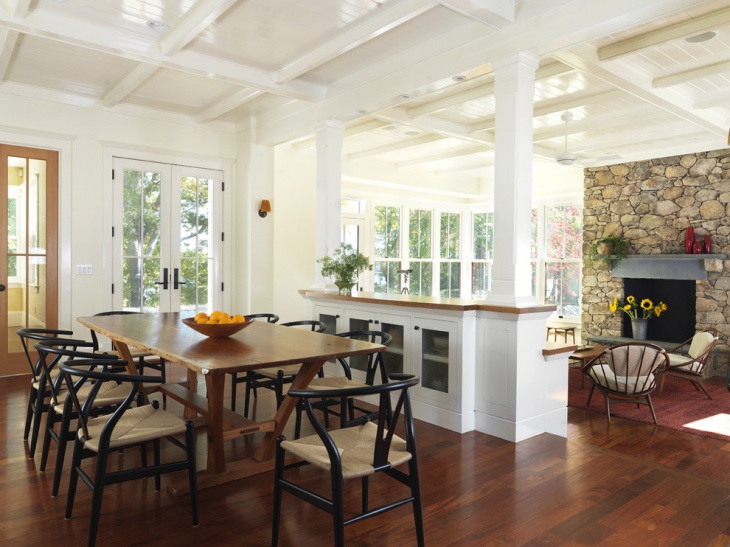
/ChairRailinginFormalDiningRoom-5ab8fc2f1f4e130037a980ea.jpg)







